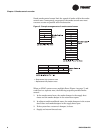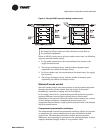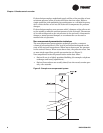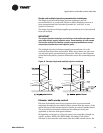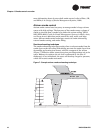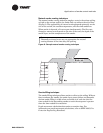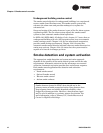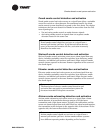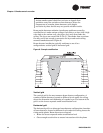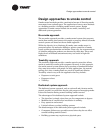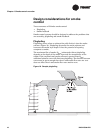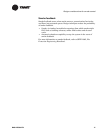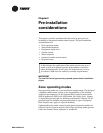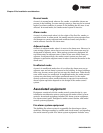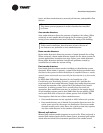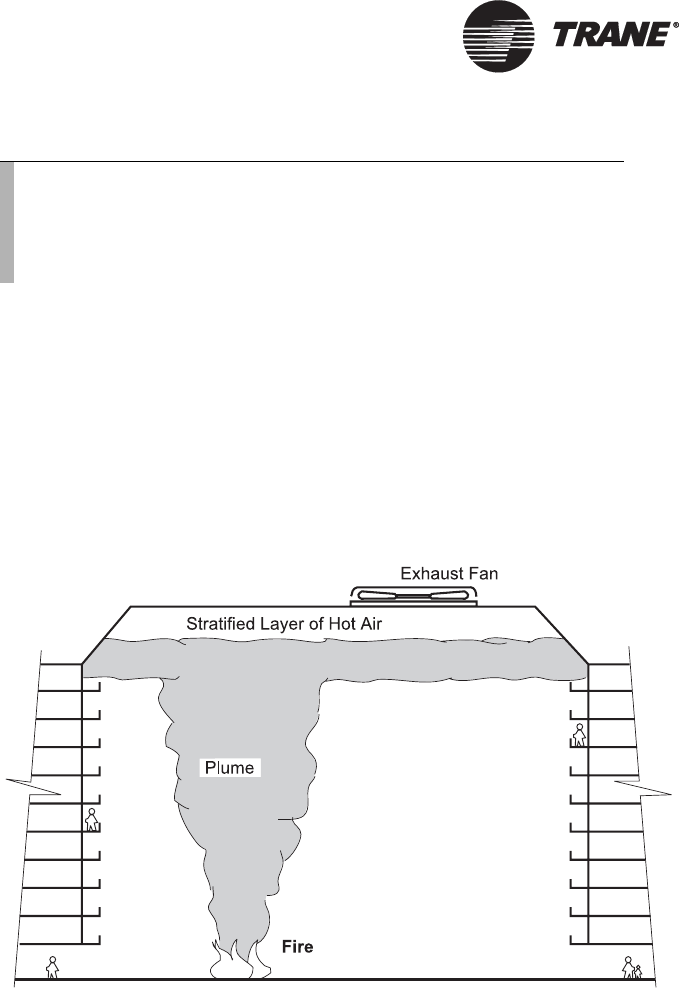
Chapter 1 Smoke control overview
14 BAS-APG001-EN
Beam smoke detectors minimize interference problems created by
stratified hot air under atrium ceilings. On hot days or days with a high
solar load on the atrium roof, a hot layer of air may form under the
ceiling. The layer can exceed 120
° F (50° C). The smoke from an atrium
fire may not be hot enough to penetrate the layer and reach ceiling-
mounted smoke detectors (
Figure 9).
Beam-detector installation typically conforms to one of two
configurations: vertical grid or horizontal grid.
Figure 9: Sample stratification
Vertical grid
The vertical grid is the most common beam detector configuration. A
number of beam detectors, located at different levels under the ceiling,
detect the formation and thickening of a smoke layer. The bottom of the
grid is at the lowest expected smoke stratification level.
Horizontal grid
The horizontal grid is an alternate beam detector configuration A number
of beam detectors, located at different levels under the ceiling, detect the
rising smoke plume. Beam detectors are located:
• Below the lowest expected smoke stratification level
• Close enough to each other to ensure intersection with the plume
Note:
Atrium smoke control should not activate on signals from
sprinkler water flow switches or heat detectors. Since the
temperature of a smoke plume decreases with height,
activation by these devices may not provide reliable results.



